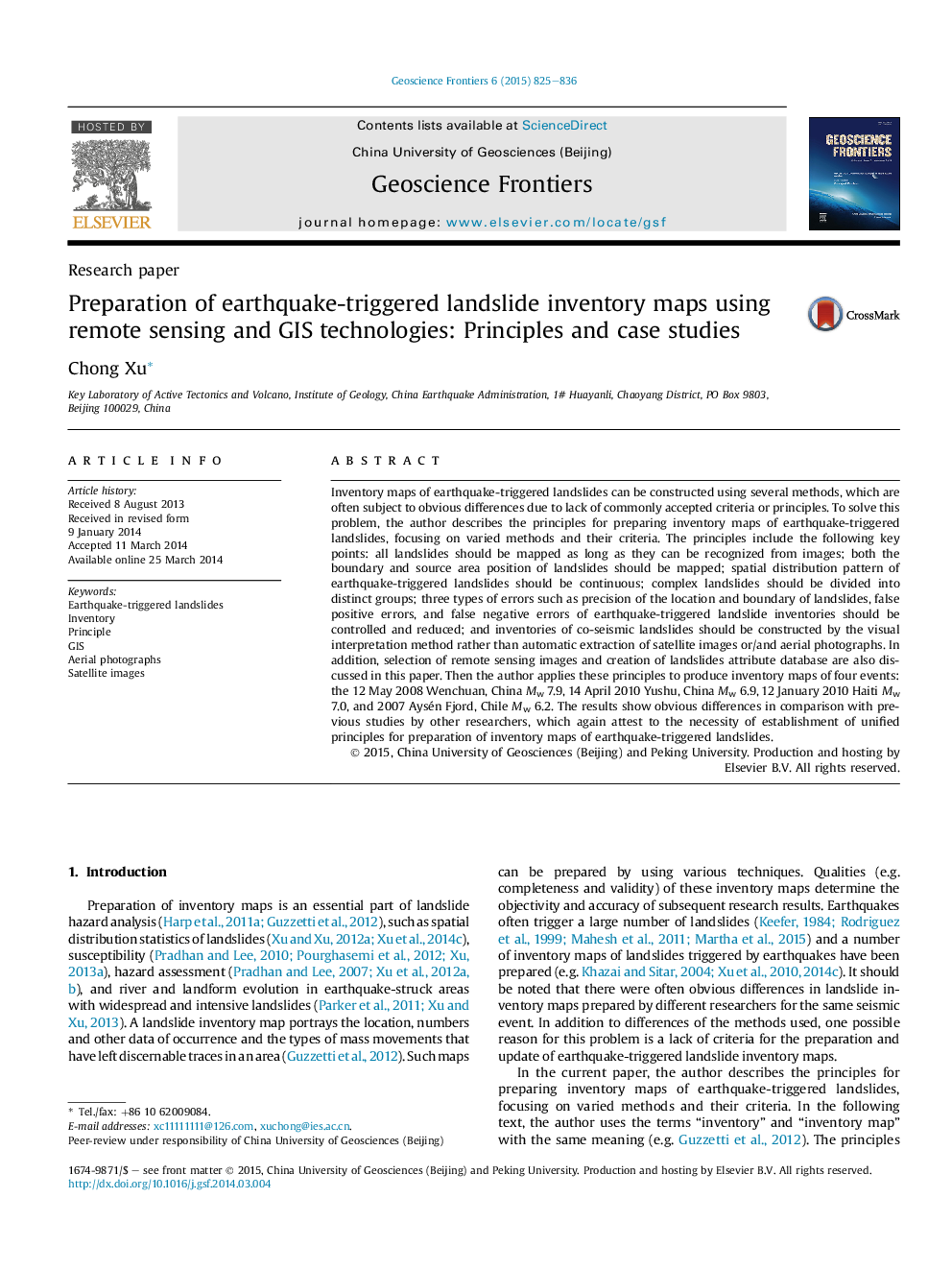| Article ID | Journal | Published Year | Pages | File Type |
|---|---|---|---|---|
| 4681491 | Geoscience Frontiers | 2015 | 12 Pages |
•Detailed principles for inventory maps of earthquake-triggered landslides.•Four case studies related to four large earthquakes occurred in the beginning of the 21st century.•Comparison of four inventories with other publications.
Inventory maps of earthquake-triggered landslides can be constructed using several methods, which are often subject to obvious differences due to lack of commonly accepted criteria or principles. To solve this problem, the author describes the principles for preparing inventory maps of earthquake-triggered landslides, focusing on varied methods and their criteria. The principles include the following key points: all landslides should be mapped as long as they can be recognized from images; both the boundary and source area position of landslides should be mapped; spatial distribution pattern of earthquake-triggered landslides should be continuous; complex landslides should be divided into distinct groups; three types of errors such as precision of the location and boundary of landslides, false positive errors, and false negative errors of earthquake-triggered landslide inventories should be controlled and reduced; and inventories of co-seismic landslides should be constructed by the visual interpretation method rather than automatic extraction of satellite images or/and aerial photographs. In addition, selection of remote sensing images and creation of landslides attribute database are also discussed in this paper. Then the author applies these principles to produce inventory maps of four events: the 12 May 2008 Wenchuan, China Mw 7.9, 14 April 2010 Yushu, China Mw 6.9, 12 January 2010 Haiti Mw 7.0, and 2007 Aysén Fjord, Chile Mw 6.2. The results show obvious differences in comparison with previous studies by other researchers, which again attest to the necessity of establishment of unified principles for preparation of inventory maps of earthquake-triggered landslides.
Graphical abstractFigure optionsDownload full-size imageDownload as PowerPoint slide
